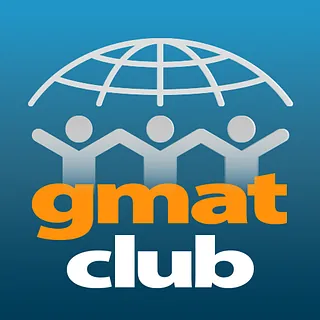
03/22/2024 0 Comments
Part-Time MBA vs EMBA – Which to Pick?
I’ve broken down some of the key points of comparison between part-time MBA and EMBA, in order to make your decision a little bit easier.
First of All, a Note About Cost.
PT: It’s hard to make a side-by-side comparison here because most PT programs are flexible in term and the costs can be spread out.
EMBA: The cost of an EMBA is always higher than PT. However, when comparing EMBA costs, keep in mind that programs that meet twice per month might be more costly than those meeting once per month. Some programs include housing costs for the weekend but others don't so factor that into the equation.
Scholarships are rare for either program unless you are part of a particular underrepresented group set aside for merit awards.
Do You Want to “Pivot”?
PT: Not as good as full-time for this, but doable with the right program. Among PT programs, Haas, Ross and Booth allow for you to quit and do an internship, whereas NYU and Kellogg require you to be employed full-time the duration of the program. It’s pretty case-by-case in terms of ability to attend OCR events - what is written on the website might be different from what you hear from students so check in with both.
EMBA: You are relying on alumni and student connections rather than OCR (I do believe CBS Saturday offers OCR which is unusual). But keep in mind your current skills need to make sense for the job, for them to set up an interview connection. There might, however, be some source of ongoing support like career coaching (Kellogg) or executive training.
From what I have seen, Wharton EMBA graduates are able to pivot fairly readily, but it’s best not to go in with this expectation. Preferably the goal is to gain skills you can sell to your current organization with the aim of getting promoted or achieving a C-level role. EMBA programs want you to be able to "apply it on Monday" so if you want to start a company, it's better to state that in your application as a long-term goal.
How Much Work Experience Do You Have?
PT: Average is about 5 years of work experience, could be as little as 2. Online programs vary more in age.
EMBA: Average is 12 years, could be as little as 8 (however for Oxford EMBA, it’s 5.)
How Old Are You?
PT: No lower limit, the average age hovers around 30. Note: Chicago Booth CBF program is a great way to obtain a tight network as an early career candidate.
EMBA: Average age is around 37 for most programs, including Wharton, Booth, Duke, Kellogg, Ross, Haas and Stern. It is around 33 for Columbia, possibly because there is no part-time program at CBS. For MIT, average age is 40 and most work at the director level.
What’s Your Test Score Situation?
PT: There might be a waiver provision but in general, a test score is always required. All accept the GMAT/GRE/EA. Average GMAT for Booth is 680, to provide some indication if you go that direction.
EMBA: There is no test score required for NYU, Ross, Kellogg, or MIT. That being said, you must show some evidence of your quant abilities and MIT requires that you have completed courses in stats and calculus. Undergraduate courses are the best way to show this and if you have poor math grades, it’s best to take the EA. Having a CFA will also work in most cases. I like to recommend mbamath.com if it’s a borderline situation; taking a stats class at a reputable university is the gold standard but takes a while. The median EA for Booth is 155; for Wharton, 157.
I would say you need a minumum of 10 in quant for the EA to show numeracy/competence. Keep in mind that for both these program types, if you are overrepresented in the application pool, the competition drives up the required test score, which means you’ll need a higher test score than average.
Do You Have Management Experience?
PT: This is always a bonus, and you should have leadership present in your profile as you would for the full-time program. If not in your job, then somewhere else such as in employee resource groups, interviewing candidates, training people on software, stuff like that. Even better, creating a positive impact in a community leadership role. But this is less of a requirement than it would be for the EMBA.
EMBA: I have helped those without people leadership roles get into top EMBA programs (Wharton specifically) though it’s not ideal. You need at least very developed project management skills with an eye towards advancing into a people management or C-suite role.
EMBA students are seeking help with people-oriented challenges; recruitment, retention, motivation, and organizational change. Having stories and solutions to share in the classroom will position you well for the EMBA. Your work experience is a big deal in the value proposition you bring.
How Mobile Are You?
PT: If you choose the evening option, you will need to be local. If you work from home, it might be a good idea to relocate (preferably to the Berkeley area, Ann Arbor or downtown Chicago.) For weekend MBA programs, 75% of Booth weekend students fly in and the same option exists for Kellogg. For Haas EWMBA, 72% of the weekend students are local.
EMBA: There is generally less travel involved for most of the programs. You will be traveling to school every other weekend in most cases, including Yale, Wharton and Kellogg Evanston. NYU-NYC meets twice monthly but NYU-DC EMBA meets monthly; similarly; Kellogg Miami meets monthly. Wharton, you will stay on campus with your cohort in Philly or a hotel in SF. At MIT, you meet 2-3 times per month. To summarize the monthly EMBA options: Ross, Chicago-Booth, Kellogg-Miami, Duke WEMBA, NYU Stern-DC and Haas.
How Much Time Do You Have?
PT: Most part-time programs are not lockstep, which allows more flexibility than EMBA. The exception is Ross Weekend which is a 2-year lock step program; less flexibility but it could be argued this deepens connections as everyone is on the same timeline. Another exception is Haas; your first year is part of a cohort of 70 but you can take up to 5 years to complete the program. Some feel that Ross Weekend and Haas EWMBA are more comparable to a full-time MBA for these reasons.
Booth and Kellogg both also allow up to 5 years, while NYU allows 6. Anderson FEMBA states 3.
EMBA: Most EMBA programs are lockstep; everyone begins and ends at the same time. They range from 21 months to 24 months. Lockstep allows for deeper bonds, which makes sense because gaining a network is one of the primary goals of doing an EMBA. Schools usually state you need to allow for 20 hours on the weekends you don’t meet for classes. I will say my clients who have done Wharton EMBA stated it was very rigorous; CBS moderately rigorous; Kellogg less so.
Most require “time sponsorship,” in that you will need to present a business case to your seniors and have them sign off on you being gone from work. FYI admissions really frowns upon you using PTO for the program and sometimes will not allow it because you will really need your down time.
What Do You Want to Get Out of This?
PT: This is usually the best option for those primarily focused on building skills, climbing the ranks, and potentially pivoting. The main motivation is a well-rounded business education. It’s usually considered to be rigorous. No one is likely to fail, but it’s rigorous. For totally flexible programs, this puts in peril how valuable or deep your bonds are with classmates.
EMBA: While most of the programs are apt at delivering a well-rounded business education or “skill” building, others are more focused on leadership development (primarily Ross, Kellogg and Duke GEMBA - none requiring a test score) and are subsequently less rigorous. One of the biggest takeaways for an EMBA program should be your relationships/network. You can get the content on Coursera but not the teamwork or network experience.
I call it a "mastermind alliance" because you will be learning from others as much or more from the professors to solve organizational challenges during the program or after the program.
Side note: Admissions puts a lot of emphasis on your letters of recommendation for EMBA because 1) you should be imparting some good “content” in class to enlarge the perspective of your colleagues, and 2) you need to be likeable and a value-add to the class from a social perspective.
Full-Time Options for Mid-Career Professionals
If you want a total sabbatical from work for 1 year and you are past the typical age of a full-time MBA student, you might look into the Sloan Fellows programs. There is Stanford MSx in Palo Alto, SFMBA in Boston at MIT, and London Masters in (obvi) London, which has the highest average age of the three.
Columbia MBA January Intake accepts the EA and starts the semester after August intake. While it does not allow for a summer internship, its handy to be in New York where you can set up informal in-semester internships (this might allow for some exploration.)
CBS J-term is mostly for entrepreneurs, sponsored candidates and family business people; the average age is a lot higher than regular term. The acceptance rate is traditionally around 40% but you need to convince admissions you won't be jobless at the end of the program. The idea is that you wont be a pain for career services or end up in the "no job after 90 days" pile.
Kellogg 1-year operates similar to CBS J-term - you need a business undergrad or be willing to take a bunch of business classes before matriculating. It's largely populated with sponsored MBB folks.
Having worked for many large MBA prep firms earlier in my career, I am proud to be a boutique provider who only handles 4-5 clients per round. I get to know my clients inside and out, which allows admissions to as well.
Partner with me to significantly increase your chances of being admitted to your top choice MBA program. Complete my contact form to receive CV and profile feedback.


Comments
Leave a comment